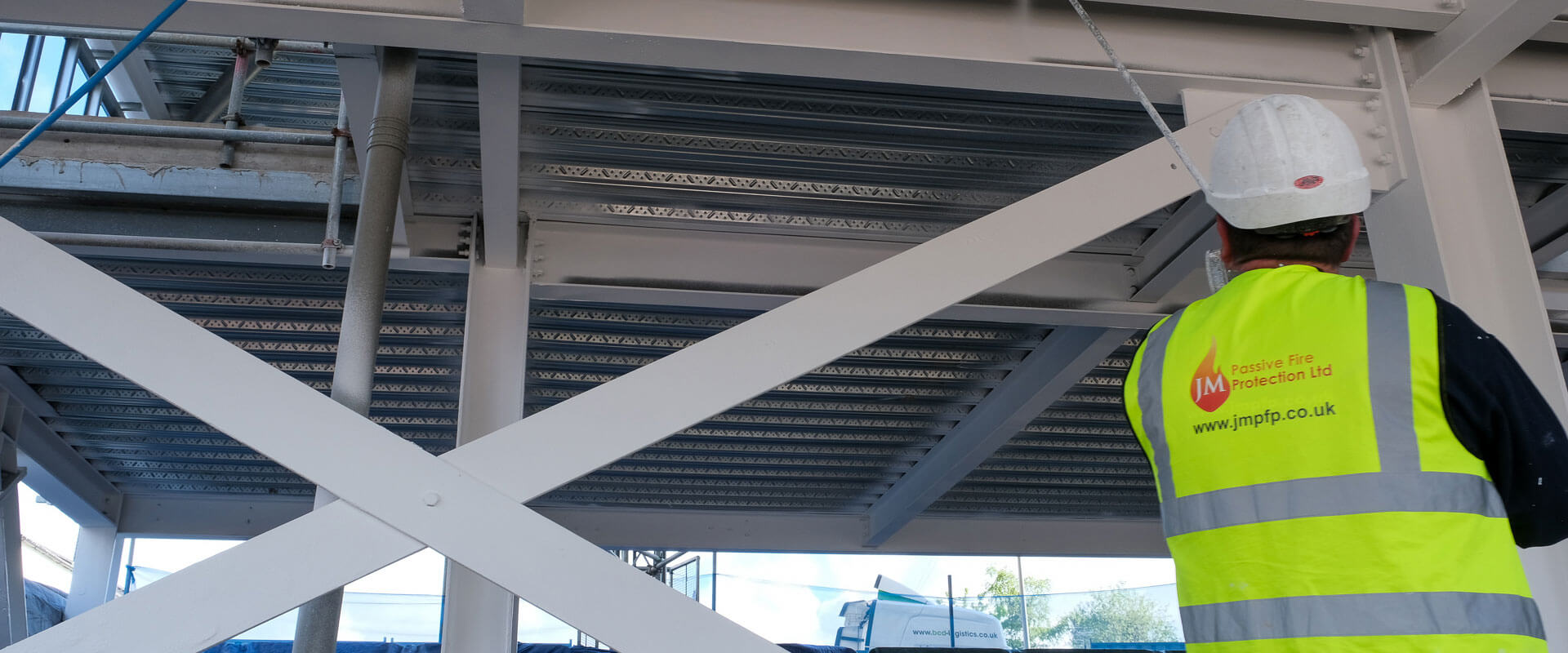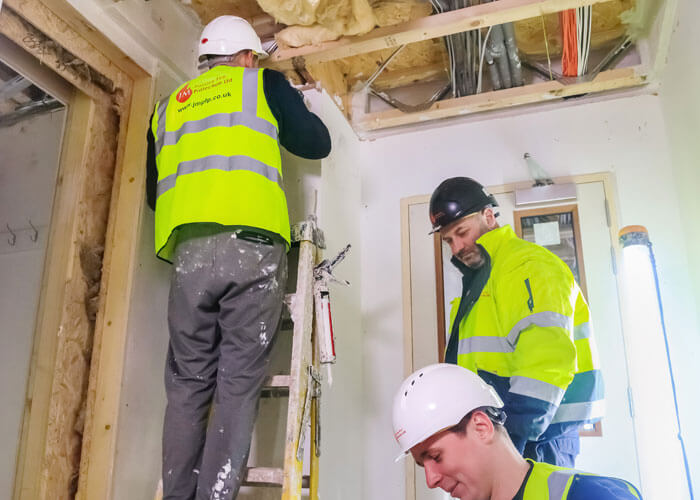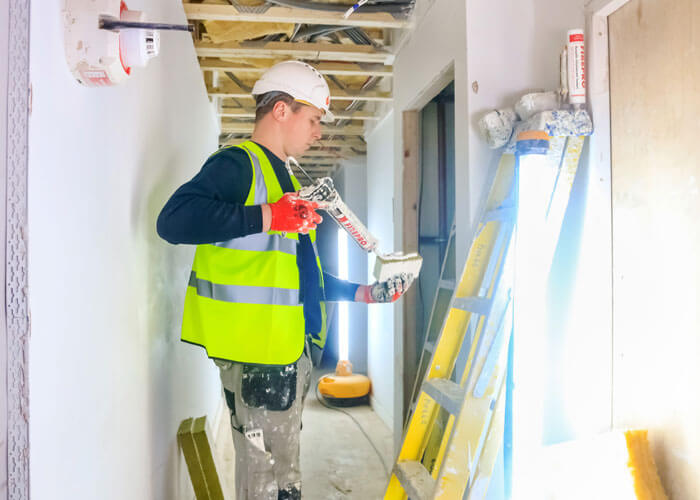
Examples of passive smoke zone systems
A passive smoke zone is any system or device that allows the smoke and fire to be contained or held at bay to give people the chance to evacuate, and to limit damage to the building itself. Some of these methods include:
- Fire doors,
- Fire-resistant paint and coatings on walls and ceilings,
- Fire-retardant cable coatings,
- Fireproof cladding,
- Fire-resistant glass and windows,
- Grease ducts,
- Air vents and ducting,
- Mechanical fans.
Any one of these applications would help to reduce smoke and fire damage, but a combination of several of them will produce the best results by compartmentalising the damage that smoke and fire can cause. The team here at JMPFP are fully qualified to install, test, and maintain all of these passive smoke zone systems to protect your property and keep your people safe.

Smoke evacuation systems
A combination of venting, fire-retardant coatings on walls and ceilings, and fire doors tend to be the most common ways that people choose to protect their building from fire, smoke and structural damage. Fire doors are built to such a standard that they should withstand the spread of a fire for a minimum of thirty minutes, while fireproof coating can protect the structural integrity of the building for up to 2 hours.
While the doors are doing their part in containing the fire, the venting is doing its part in reducing the smoke by extracting it from the building. This is why this combination of products is so popular.
Benefits of passive smoke zones
The benefits of installing passive smoke zone solutions are many:
Life-saving – It may sound obvious to state this, but any system that you have in place that gives people a greater chance of escaping a fire and saving lives, is invaluable.
Low maintenance – Once passive protection systems have been installed then they require very little in the way of maintenance.
Cost-effective – If passive smoke systems are installed when a building is being newly constructed then this significantly reduces the cost of fire-proofing the building, but it can be added or retrofitted at any time. If the worst happens and a fire does take place, the passive systems that you put in place may vastly limit the cost of repairs once the fire has been put out.
Limit the damage – A zone smoke control system actively divides the building into separate smoke-controlled areas. By concentrating pressure into the affected area, the damage is contained.
Peace of mind – You can work in the building safe in the knowledge that if a fire does happen, the building is fully kitted out with life-saving systems to give you the precious time that you need to evacuate.
Cover large areas – Passive smoke zone systems are perfect for protecting buildings with a large square foot coverage. They are also favoured in buildings that have heritage or cultural status where, in the outbreak of a fire, restoration of the building to its original state would be virtually impossible.

Speak to the team for expert advice on installing passive smoke zone options
Installing passive smoke zone systems at your property needs to be done by professionals, as there are stringent health and safety measures that have to be met in order for the work to be signed off and approved. The team at JMPFP have years of experience in safely and efficiently installing fire preventative measures, including passive smoke systems and active fire protection systems.
To discover which system would be the best option for your building, get in touch via email at [email protected], or if you’d like to speak to us in person then call us on 0151 329 3230.